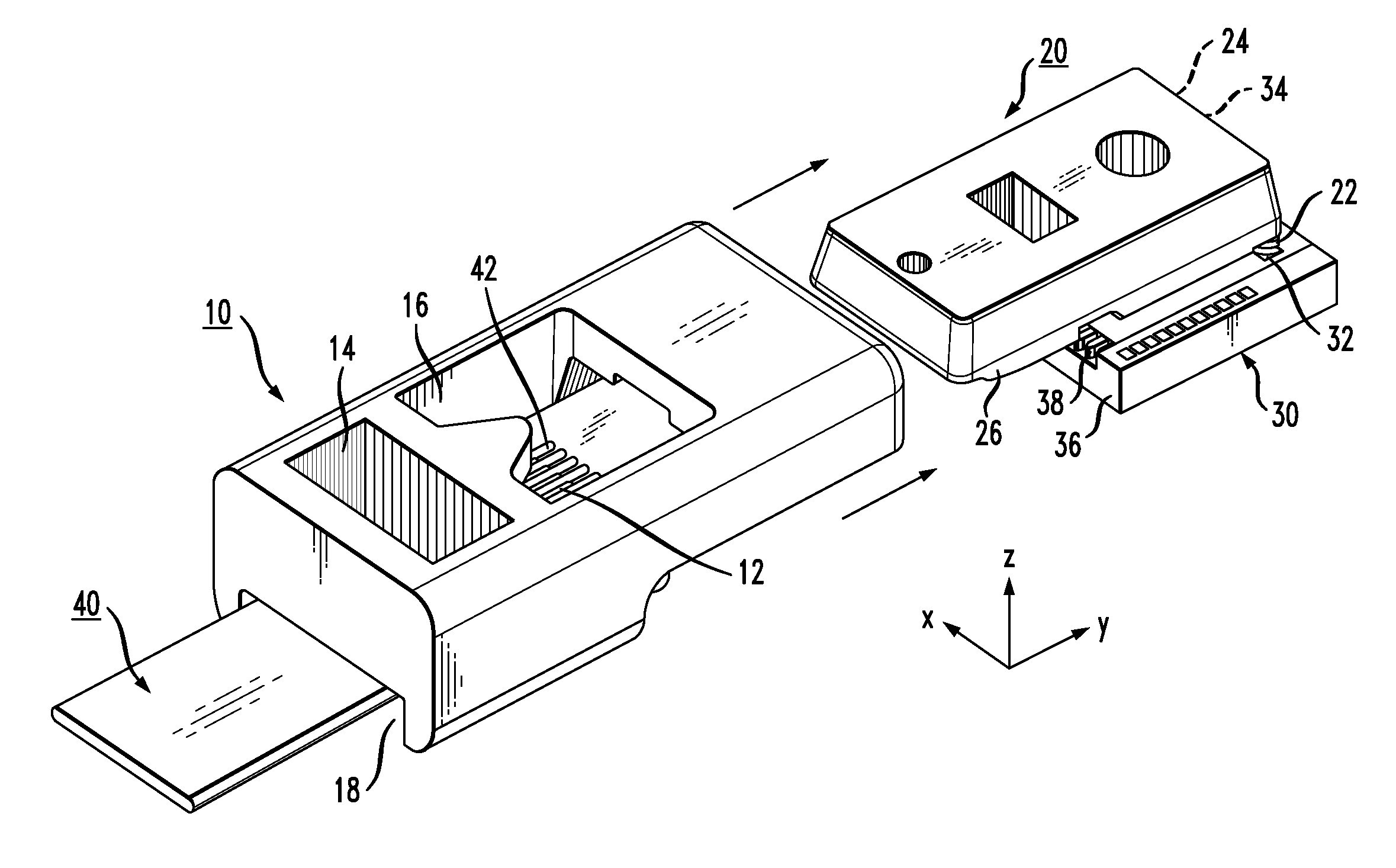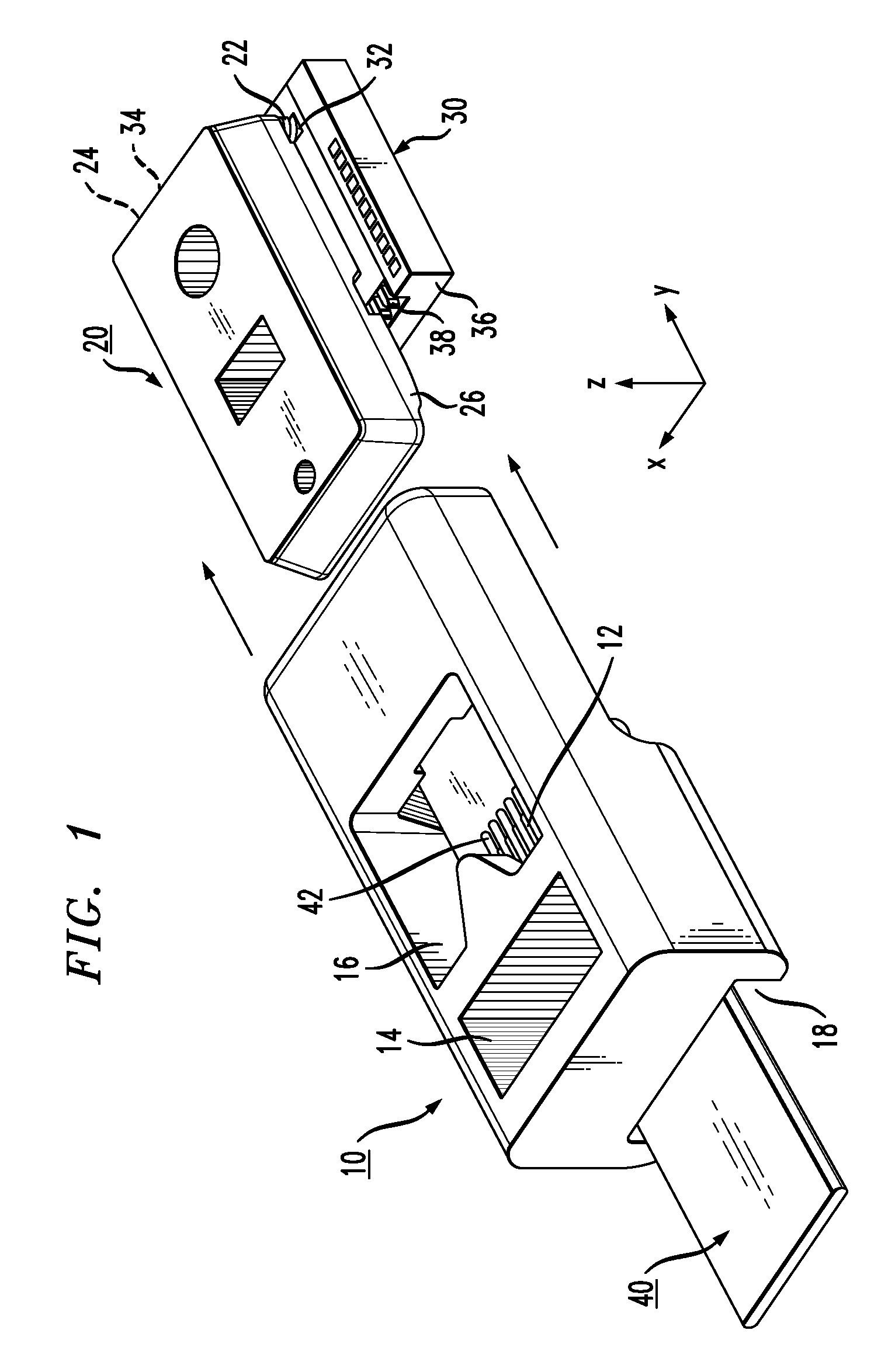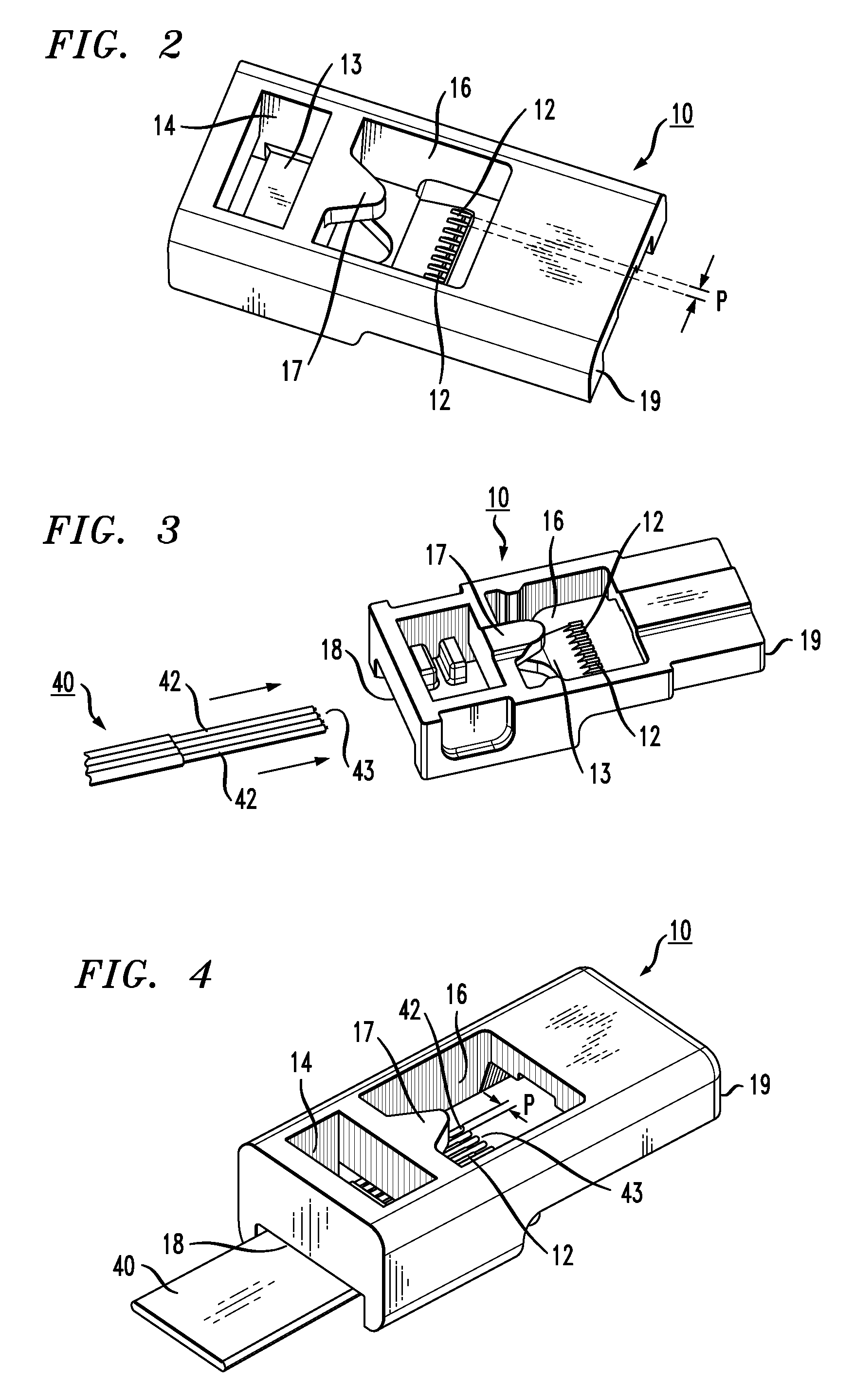Multi-fiber interface to photonic subassembly
a fiber array and sub-assembly technology, applied in the field of multi-fiber interface to photonic sub-assembly, can solve the problems of slowing down the penetration of fiber optic technology into other markets, high cost of manufacturing fiber optic interfaces, and high manufacturing cost of optical fiber interfaces
- Summary
- Abstract
- Description
- Claims
- Application Information
AI Technical Summary
Benefits of technology
Problems solved by technology
Method used
Image
Examples
Embodiment Construction
[0027]As will be described in detail hereinbelow, the present invention relates to a multiple piecepart alignment configuration for providing alignment between a fiber array and a planar photonic subassembly. In particular and as shown in FIG. 1, the invention consists of three separate components: a box-shaped fiber holder 10, a grooved lid 20 and a silicon photonic subassembly 30, with an xyz set of coordinates also shown in FIG. 1. In use, a fiber array 40 is inserted in fiber holder 10, where the individual fibers forming the array are introduced to sequentially tighter alignment tolerances until being ultimately aligned with waveguides (not shown) formed on silicon photonic subassembly 30. An alignment on the order of ±2 μm in the x-axis direction, in combination with a ±10 μm y-axis / z-axis (longitudinal / vertical) alignment has been achieved with one exemplary embodiment of the configuration of the present invention.
[0028]The three separate components used to provide this align...
PUM
 Login to View More
Login to View More Abstract
Description
Claims
Application Information
 Login to View More
Login to View More - R&D
- Intellectual Property
- Life Sciences
- Materials
- Tech Scout
- Unparalleled Data Quality
- Higher Quality Content
- 60% Fewer Hallucinations
Browse by: Latest US Patents, China's latest patents, Technical Efficacy Thesaurus, Application Domain, Technology Topic, Popular Technical Reports.
© 2025 PatSnap. All rights reserved.Legal|Privacy policy|Modern Slavery Act Transparency Statement|Sitemap|About US| Contact US: help@patsnap.com



